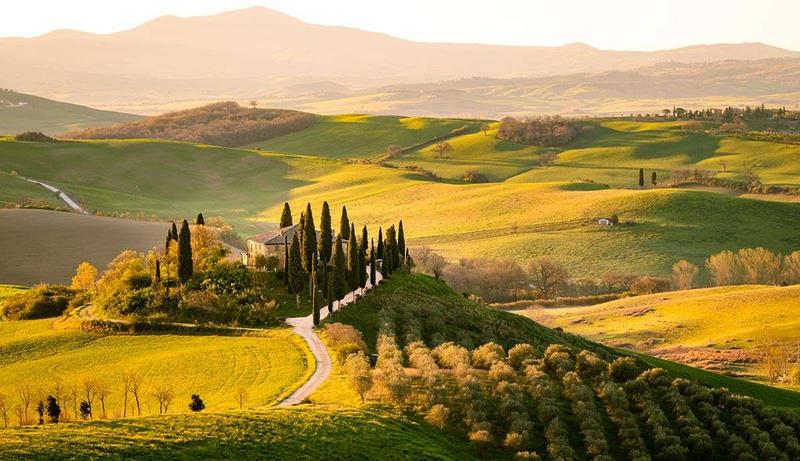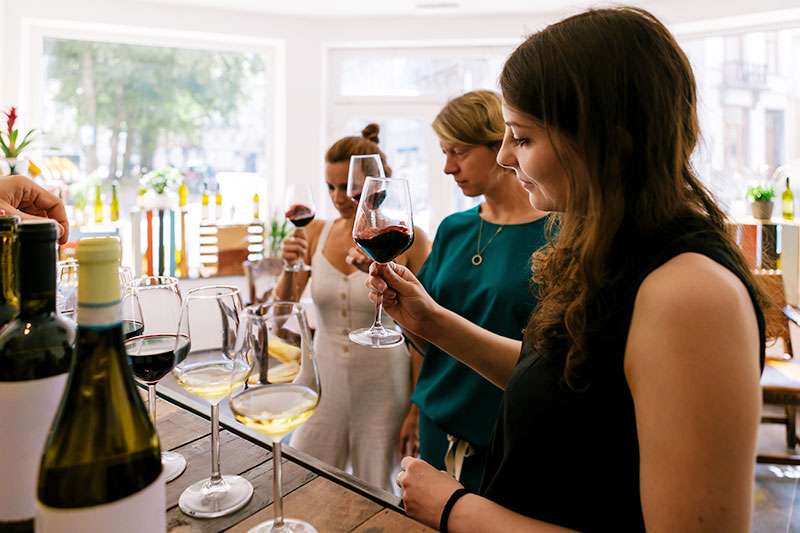
The Parks of Nervi
Removed from Unnamed collection
Source: Glasgow Better Adventure Images may be subject to copyright. Learn More
The Parks of Nervi are a captivating blend of history and nature, nestled in the heart of Genoa. This remarkable complex is a fusion of several exquisite gardens that once graced private villas: Villa Gropallo, Villa Saluzzo Serra, and Villa Grimaldi Fassio. Today, these elegant villas have been lovingly transformed into museums and are now part of the City's cultural treasures. Strolling through the lush greenery, you'll find yourself wrapped in the serene beauty of the landscape, where each step reveals a new story from the past.
The parks are a perfect escape for anyone looking to unwind and soak up the Italian sunshine. As you wander, keep an eye out for the stunning array of plant species that thrive here, making it a haven for botany enthusiasts. And don't miss the breathtaking views of the Ligurian Sea, which provide a stunning backdrop to this historical gem. Whether you're a history buff, an art lover, or simply someone who appreciates the beauty of nature, the Parks of Nervi offer a delightful experience that will linger in your memory long after you've left.
You may also be interested:
Removed from Unnamed collection
La Rive Droite 
Let me take you on a journey through the enchanting streets of Genoa's historic center, specifically the right bank of the city. This area unfurls to the right of the majestic San Lorenzo Cathedral. Our adventure kicks off in the bustling Piazza Cari
Map
Removed from Unnamed collection
Strada Nuova Museums - Palazzo Rosso 
Nestled within the grandeur of Palazzo Rosso, a noble residence adorned with exquisite furnishings and frescoes crafted by Liguria's most renowned 17th-century painters, lies an impressive gallery of paintings. This rich collection was carefully cura
Map
Removed from Unnamed collection
Small Group Half-Day Trekking Tour
14 June 2025
Cinque Terre is more than just a collection of postcard-perfect villages. It's a tapestry woven with breathtaking nature, charming towns, and rich Italian culture. Our Small Group Half-Day Trekking Tour goes beyond the typical tourist experience, off
Removed from Unnamed collection
Monterosso beach
9 August 2022
Пляж в деревушке Monterosso, в Италии, в долине Cinque Terre. Приятная, прозрачная вида, немного каменистый вход но терпимо. Жаль, что попали в самый сезон, на пляже не протолкнуться, наверное позже, в Сентябре свободнее.
Removed from Unnamed collection
Monterosso
9 August 2022
Наверное, второй после Vernazza город в Cinque Terre, он чуть побольше чем Vernazza, несколько небольших улиц с кафе, очень понравился, комфортный.
Removed from Unnamed collection
Panoramic Tuscany Hills Walking Tour
18 June 2025
Discover the beautiful surroundings of Florence on a one-day hike through the local green landscapes. Your journey begins with a comfortable minivan ride to a quaint village just outside Florence. Stroll through shady cypress woods, leading you to
Removed from Unnamed collection
One-day Boat Tour 
11 June 2025
Discover the Cinque Terre: A Boat Trip Adventure Begin an enchanting boat tour along the stunning Cinque Terre coastline. As we sail, you'll discover the unique charm of each village basking in the golden glow of the sunset—a view that's simply unp
Map
Removed from Unnamed collection
Квартира в Vernazza 
8 August 2022
В Vernazza останавливались в квартире на самом верху холма. Из минусов, конечно, что подниматся было непросто. Лишний раз вниз, за бутылочкой кьянти не сбегаешь, вспотеешь. Но с балкона открывались изумительные виды на деревню и на море, а в спальне
Map
Removed from Unnamed collection
Vernazza Village 
7 August 2022
Деревня Vernazza, в которой находилась наша "база", квартира, из которой мы совершали вылазки в другие места Cinque Terre. В путеводителях было написано, что Vernazza это город, но боюсь, что они сильно приувеличили. Бывшая рыбацкая деревня, которая
Map
Removed from Unnamed collection
Coastal Walking Day Trip 
12 June 2025
Explore the breathtaking beauty of Cinque Terre with our expertly guided shore excursions. Accompanied by a knowledgeable tour leader, you'll journey through the iconic villages of Vernazza, Monterosso, Riomaggiore, and Manarola. Stroll the vibra
Map
Removed from Unnamed collection
Riomaggiore 
9 August 2022
Первая из пяти деревень Cinque Terre, с традиционными домиками, лодками, пиццей. street food у них fried fish mix - креветки, анчоусы, кальмары, вообще все в кучу обжаренное во фритюре. Хорошая смотровая дорожка рядом со станцией
Map
Removed from Unnamed collection
Wine Tasting and Pasta Cooking Class 
8 June 2025
Start a culinary journey through the landscapes of Tuscany and the Cinque Terre. This one-day adventure offers a unique blend of wine tasting and pasta-making experiences, allowing you to immerse yourself in the authentic flavors and traditions of It
Map
Removed from Unnamed collection
Local Hills E-Bike Tour with Lunch
16 June 2025
Experience a scenic e-bike ride through the ancient and narrow Tuscan roads. Join us for an immersive adventure in the Florentine hills, made easy by our comfortable e-bikes. Cycle through classic Tuscan landscapes, surrounded by lush greenery, vin
Removed from Unnamed collection
Portovenere Private Full-Day Tour - Best of the city and San Pietro 
20 June 2025
Discover the enchanting charm of Portovenere, a hidden gem on the Ligurian coast, during this immersive full-day guided tour. Nestled at the edge of the Cinque Terre, this UNESCO World Heritage-listed village offers a perfect blend of history, dramat
Map
Removed from Unnamed collection
Fortress of Castell 
A stunning array of medieval castles graces the valleys and countryside, crafting landscapes that are nothing short of enchanting. Take the Fortress of Castell’Arquato, for example. This historic gem towers majestically above its surroundings, offeri
Map
Removed from Unnamed collection
Val dArda is Castell Arquato 
Nestled in the enchanting Val d'Arda, Castell'Arquato is a true gem. Its historical center, with its charming cobblestone streets, is dominated by the majestic Praetorian Palace and the impressive 14th-century Fortress. Wandering through this medieva
Map
Removed from Unnamed collection
Church of the Sant Annunziata 
If you're wandering through the enchanting region of Emilia-Romagna, make sure to visit the Church of the Sant’Annunziata. This gem holds the echoes of the ancient State of the Pallavicini and showcases stunning 15th-century architecture. It's not ju
Map
Removed from Unnamed collection
Uviglie Castle
Nestled in a serene landscape, the property boasts an ancient park that echoes its rich architectural significance and artistic heritage. Thanks to its historical value, it's protected under the Royal Law Decree of June 1939. Today, this enchanting e
Removed from Unnamed collection
Ecomuseo della Pietra da Cantoni
At first glance, naming a museum after a stone might sound odd, but stepping into the Ecomuseo della Pietra da Cantoni sheds light on why this particular material holds such significance in Monferrato's culture. This stone isn't just any rock; it's a
Removed from Unnamed collection
The church of SantEvasio
The Church of Sant’Evasio, an architectural gem, dates back to the 8th century. It was established during the reign of the Lombard King Liutprand, who sought to honor Saint Evasius by constructing an impressive basilica. This new structure was built
Removed from Unnamed collection
Regio Theatre 
Commissioned by the illustrious Maria Luigia and brought to life by the visionary architect Nicola Bettoli, the Regio Theatre stands as a testament to timeless elegance. Constructed between 1821 and 1829, it occupies the historical grounds of the for
Map
Removed from Unnamed collection
Pilotta palace 
The sprawling yet incomplete structure, known as Pilotta Palace, owes its name to the game of pelota once played in one of its courtyards. Commissioned in the latter part of the 16th century by Ranuccio I, it was constructed around the Visconti stron
Map
Removed from Unnamed collection
Chamber of Saint Paul and Saint Catherine 
The Chamber of Saint Paul used to be an integral part of the abbess' quarters in the Benedictine Convent of Saint Paul. This charming space was decorated in 1514, commissioned by the visionary Abbess Giovanna da Piacenza. Her leadership was renowned
Map
Removed from Unnamed collection
The Royal Castle of Racconigi 
Nestled in the picturesque province of Cuneo, in the charming region of Piemonte, the Royal Castle of Racconigi beckons with its regal allure. Once the official residence of the Carignano branch of the House of Savoy, this majestic castle is a proud
Map
Removed from Unnamed collection
St. Francis and the Basilica 
The World Heritage Committee has recognized the Basilica and other significant sites related to the Franciscan Order as treasures of human creativity and genius. These places are more than just historical landmarks; they are living testaments to the
Map
Removed from Unnamed collection
Samone Palace 
Nestled in the charming city of Cuneo, a historical site awaits your discovery: Palazzo Samone. It's a must-visit for any traveler exploring the area. With its stunning architecture and rich history, this place promises an unforgettable experience. C
Map
Removed from Unnamed collection
Behold Milan's Awe-Inspiring Gothic Cathedral 
29 November 2023
Even viewed only from the outside, the Duomo di Milano inspires awe with its grand scale and intricately ornate Gothic design. As the third largest church in Europe, this 14th century cathedral dominates the Milan skyline with its forest of soaring s
Map
Removed from Unnamed collection
Milan Cathedral 
Picture yourself standing in Milan's bustling heart, gazing up at the magnificent Duomo di Milano. Construction began way back in 1386, right where the ancient basilicas of Santa Tecla and Santa Maria Maggiore once stood. These were ultimately taken
Map
Removed from Unnamed collection
Milan city 
11 August 2022
Город с замечательной архитектурой, прекрасными улицами, но в котором, если ты не любитель итальянской оперы или не хочешь купить себе мебель, делать нечего уже на второй день
Map
Removed from Unnamed collection
Galleria Vittorio Emanuele II 
The Galleria is both a bustling thoroughfare for business professionals and a captivating destination for curious travelers. It showcases the city's diverse character through its multifaceted charm. When it was first unveiled, the Galleria gained ins
Map
Removed from Unnamed collection
Teatrale Alla Scala 
La Scala, or Teatro alla Scala as it’s known in Italian, stands as a beacon in the world of opera. With its understated yet sophisticated exterior, it often leaves first-time visitors pleasantly surprised. The story of its construction is as dramatic
Map
Removed from Unnamed collection
Museum of the Pieta Rondanini 
Tucked away within the historic walls of the Castello Sforzesco, the new museum set in the ancient Ospedale Spagnolo (Spanish Hospital) is now welcoming visitors for the first time. This captivating space is dedicated solely to Michelangelo’s final m
Map
Removed from Unnamed collection
Sforza Castle 
Castello Sforzesco is a delightful surprise, a monument brimming with specialized museums and echoes of Milan's storied past. It's an oasis where art and culture thrive. This fascinating structure began as a Visconti fortress and later became the res
Map
Removed from Unnamed collection
Brera 
Brera is truly the artistic soul of the city. Wandering through its ancient streets is like stepping into a dreamy painting. Everywhere you look, there's something to capture your imagination: charming artisan workshops, quaint stores brimming with c
Map
Removed from Unnamed collection
Natural Park Migliarino San Rossore 
Just a stone's throw from the bustling crowds flocking to Pisa's iconic Piazza dei Miracoli, there's a peaceful slice of nature waiting to be discovered. Welcome to the Migliarino, San Rossore, and Massaciuccoli Nature Park, a sanctuary that remains
Map

 Glasgow Better Adventure
Glasgow Better Adventure 
 Italy
Italy 

































